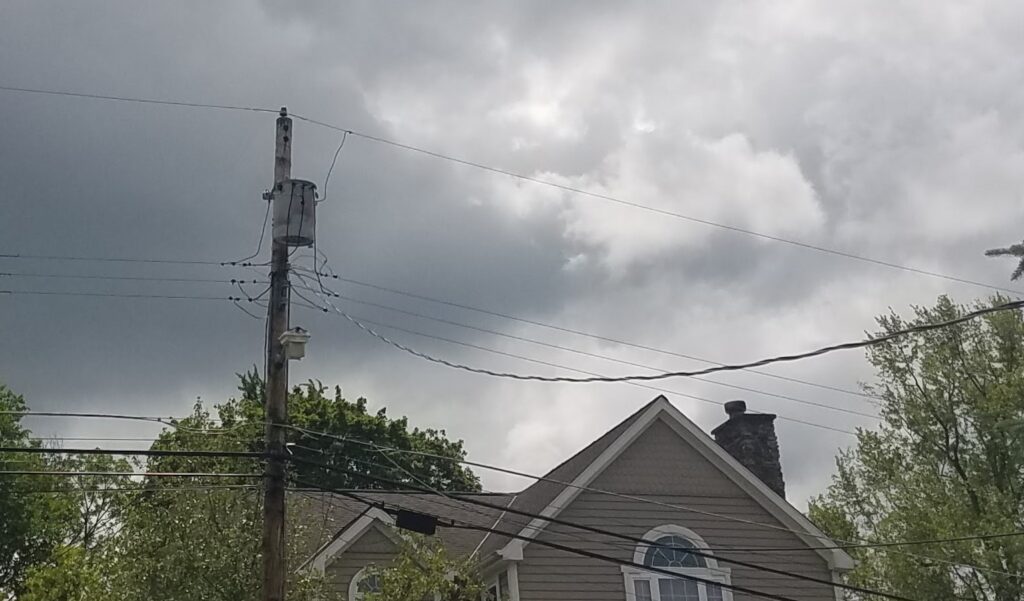Now that we’re in the throes of preparation for home electrification, I’ve started noticing more news stories directly related to that aspect of our journey as homeowners. One item in particular that caught my ears was recently when I was catching up on some past episodes of “The Energy Gang” podcast [1] was the global transformer shortage. Like many things in and around the home, transformers are something you tend not to think about until you don’t have them, and longer lead times for transformer production are a factor of – and limitation to – grid modernization.
Not Just Us
As we started to prepare for the eventual electrification of our house, our first step was to understand what our maximum demand might be at any given point. As I described in last week’s post, [2] we probably over-purchased on our tankless water heater’s capacity. I can’t imagine a scenario in which we would ever be running the shower, dishwasher, and a load of laundry with hot water all at the same time in our home, but we read a fair share of (hilariously entitled) 1-star product reviews online written by people who expected the unit to operate outside of its specifications. While not a factor for us now, we started thinking ahead to whether we ever might sell this home and the needs (or attitudes) of the next family who occupies it.

Image credit: [3]
Combined with other future electric appliances, these changes necessitated an upgrade to our electric service. Not only would we be using more electricity (and less gas) in the future, but we needed newer lines with increased capacity to carry that additional electricity, especially if we were using multiple heavy-use appliances at once. A recent poll out of Yale indicates that almost two thirds of Americans would prefer that all or most of their major home appliances be electric (about half of that refused to budge on cooking with gas). [4] I know that Christian and I are far from the only ones already working toward home electrification, but that statistic means that there are probably many more to come, and consequently our grid infrastructure and electricity supply will need to keep up.
Based on visual inspection of the utility pole across the street from our house, our service upgrade last month did not include a new transformer. I don’t know how old our current one is or when we will need a new one, but I do know that electric utilities are feeling a crunch between reduced supply and increased demand. The latter is a result of the fact that existing equipment regularly needs to be replaced in order to keep the grid operational (I remember losing several transformers – and squirrels – in my neighborhood growing up) as well as the fact that even more equipment needs to be in place to support our needs as we ask more of our electricity grid.

A Really Big Voltage Adaptor
The role of transformers in the grid is to ensure that electricity gets to your home and that it is usable once it gets there. The voltage in your outlet (if you live in the United States) is 120. If you’ve ever traveled abroad, you probably would have needed a device to adjust the voltage so you don’t fry your electronic equipment at the 220-240V they use in much of Europe, Asia, and the South Pacific. [5] Adjusting the voltage using a plug-in adapter in a foreign country is not unlike adjusting the voltage using a transformer – it just happens on significantly different scales. And if you’re curious about the specifics of how that is done, I can assure you it’s very cool. There are some great resources available on YouTube that do a far better job with animations than I can do with words. [6]
But I digress: in order to transmit electricity from the generation point to your neighborhood, it will likely need to travel long distances through lines rated for much higher voltage. It may drop from over 1,000V in a high voltage line to hundreds of volts at a substation, then travel through the lines in your neighborhood, dropping again to 120V before entering your house. [7] According to the National Renewable Energy Laboratory, which has been looking into the growing demand for transformers for years, capacity of distribution transformers (the ones stepping down voltage to get electricity to your house) may need to grow by as much as 250% by 2050. [8]

Image credit: [9]
The other side of electricity’s journey involves “step-up” transformers, the ones that increase the voltage from the point of electricity generation for long-distance transmission. These transformers are necessary to integrate wind and solar farms into the grid, but recent reports explain that the lead time on new transformers, which need to be built to order for a given use, had tripled from 50 weeks in fall of 2022 to 150 weeks in the fall of 2023. Demand was already high before the Inflation Reduction Act spurred additional renewable energy projects, but supply was already limited before exacerbations from the pandemic and Russia’s invasion of Ukraine. [10]
What’s Next?
Despite the market conditions that would allow manufacturers to set sky-high prices, it still takes decades to expand – and break even on – new lines of production. For that reason, US production capacity has been slow to adjust, and it is therefore expected to meet only 20% of transformer demand. President Biden signed executive orders in June 2022 to grease the skids on domestic production, but it does not appear that any legislation has moved forward to create mechanisms for funding. [11]
Ultimately, it appears that the transformer shortage could delay up to a quarter of global renewable energy projects in the coming years, and it’s unclear what – if anything – can be done to alleviate that strain at this point. At least the folks over at “The Energy Gang” podcast and their parent company, energy consultant Wood Mackenzie, don’t seem to have any suggestions as of last month. Since I hate having to sit and watch a situation that’s completely out of my hands, I will instead turn my eyes to something else evolving in the world of electrification, which may ultimately be our best short-term avenue in a world of restricted supply: flexible demand. And that is where we’ll pick up next week.
~
What questions do you have after this post? I’d love to hear about what aspects of this situation are interesting or concerning to you. Please share your thoughts in the comments below.
And thanks for reading!
Keep Reading About The Grid –>
[1] https://www.woodmac.com/podcasts/the-energy-gang/
[2] https://radicalmoderate.online/electrical-service-upgrade/
[3] https://kidscreen.com/2024/04/04/hasbro-sends-80s-transformers-toon-to-theaters/
[4] https://climatecommunication.yale.edu/publications/electrification/
[6] https://www.youtube.com/watch?v=Nfja9F8OdPM
[7] https://en.wikipedia.org/wiki/Overhead_power_line
[9] https://www.youtube.com/watch?v=Nfja9F8OdPM
0 Comments